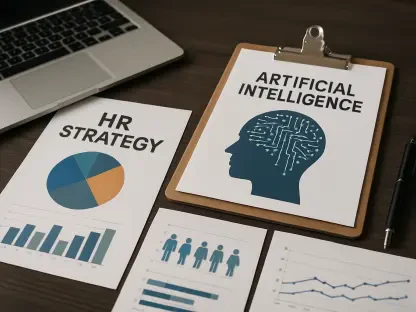In a landscape where talent often defines a company’s success, the competition to attract and retain skilled professionals has never been fiercer, prompting major players in human capital management to seek innovative solutions. A recent announcement has sent ripples through the HR technology sector, highlighting a strategic move by a global software leader to enhance its offerings. This development promises to reshape how organizations approach the complex process of hiring, onboarding, and managing talent. By integrating advanced tools and cutting-edge technology, the initiative aims to address critical challenges faced by businesses in a rapidly evolving market. The focus on seamless workflows, data-driven insights, and enhanced candidate experiences signals a transformative shift, positioning this partnership as a game-changer in the industry. As companies increasingly prioritize talent as a core business driver, such advancements are poised to redefine the future of workforce management with unprecedented efficiency.
Strengthening Human Capital Management
Enhancing Recruiting Capabilities
The integration of specialized talent acquisition software into a leading human capital management suite marks a significant leap forward in addressing the needs of modern businesses. This strategic alignment brings user-friendly interfaces and streamlined workflows designed to simplify the recruitment process. With a strong emphasis on automation, the combined solution reduces time-to-hire by enabling faster sourcing and screening of candidates. Additionally, AI-driven innovations play a pivotal role in enhancing decision-making, offering personalized recommendations that align with organizational goals. The result is a more engaging candidate experience, fostering stronger connections between employers and potential hires. This approach not only improves efficiency but also positions talent acquisition as a critical component of overall business strategy, ensuring that companies remain competitive in attracting top-tier professionals across diverse industries.
Beyond automation and AI, the focus on high-volume recruiting addresses the unique demands of organizations with extensive hiring needs. The technology facilitates seamless management of large applicant pools, ensuring that no potential talent slips through the cracks. Embedded analytics provide deeper insights into hiring trends and bottlenecks, empowering HR teams to make informed adjustments to their strategies. This capability is particularly valuable in industries where rapid scaling is essential, as it allows for agile responses to workforce demands. Furthermore, the emphasis on candidate engagement through intuitive tools helps build a positive employer brand, which is increasingly important in a market where job seekers prioritize transparency and communication. By combining these elements, the enhanced recruiting framework offers a comprehensive solution that aligns with the evolving expectations of both employers and candidates.
Creating a Unified Data Ecosystem
A key advantage of this strategic partnership lies in the creation of a unified, data-driven system that integrates recruitment analytics with broader HR tools. This seamless flow of information ensures that data from hiring processes directly informs workforce planning and other critical functions. Such integration eliminates silos, fostering transparency and compliance across operations. Businesses benefit from a holistic view of their talent pipeline, enabling them to identify gaps and opportunities with greater precision. The harmonized system also supports regulatory adherence by maintaining consistent data standards, a growing concern in global markets. This unified approach not only boosts operational efficiency but also provides a foundation for scalable growth, catering to organizations of varying sizes and complexities.
Equally important is the flexibility offered by maintaining standalone options alongside integrated solutions. Recognizing that not all businesses require a fully merged system, this dual approach ensures accessibility for diverse customer needs. Companies can choose to adopt specific components without committing to an entire suite, preserving choice and adaptability. This balance between integration and independence reflects a deep understanding of market dynamics, where customization often drives adoption. Moreover, the use of embedded AI recommendations within the data ecosystem enhances strategic planning by predicting hiring trends and suggesting actionable insights. As a result, organizations are better equipped to navigate the challenges of talent management, ensuring they remain agile in response to shifting industry demands while leveraging robust technological support.
Industry Impact and Future Outlook
Redefining Talent Acquisition Trends
The broader implications of this acquisition point to a significant shift in HR technology, aligning with industry trends toward consolidation and technological advancement. As companies strive to offer all-in-one solutions, the merging of innovative recruiting tools with established management suites sets a new benchmark for competition. This move underscores the growing recognition of talent as a business priority rather than solely an HR concern, emphasizing its role in driving organizational success. The focus on AI-enabled recruiting and end-to-end hiring workflows highlights a transformative approach, promising to lower the total cost of ownership for businesses seeking efficient solutions. With the transaction set to close in the fourth quarter of this year, pending regulatory approvals, the structured timeline reflects a deliberate effort to ensure smooth integration.
Another critical aspect is the global reach this partnership facilitates, impacting over 4,000 organizations worldwide that currently rely on these talent acquisition tools. The shared vision of making hiring accessible and efficient on a global scale resonates strongly in a market hungry for innovation. Leaders from both entities have expressed optimism about advancing their mission to simplify recruitment processes, a sentiment that fuels anticipation across the sector. This enthusiasm is grounded in the potential to redefine how companies approach talent challenges, offering tools that are not only technologically advanced but also deeply intuitive. As the industry watches this development unfold, the ripple effects are expected to inspire further advancements, pushing competitors to elevate their offerings in response to heightened expectations for comprehensive, user-centric solutions.
Reflecting on Strategic Milestones
Looking back, the decision to bring together cutting-edge talent acquisition technology with a leading human capital management platform stood out as a pivotal moment in HR tech history. The integration delivered on its promise of enhanced efficiency, providing businesses with streamlined tools to manage the entire candidate lifecycle. Improved candidate experiences became a hallmark of this partnership, as organizations reported stronger engagement and faster hiring cycles. Data-driven insights also played a crucial role, enabling companies to make smarter workforce decisions with confidence. This strategic alignment not only strengthened market positioning but also set a precedent for how technology could address pressing talent challenges.
As attention turned to the future, the emphasis shifted to sustaining this momentum through continuous innovation and adaptation. Businesses were encouraged to explore how such integrated systems could evolve to meet emerging needs, particularly in areas like remote hiring and diversity initiatives. The success of this merger served as a reminder of the importance of agility in talent management, prompting industry leaders to prioritize scalability and flexibility in their strategies. Additionally, the potential for further collaborations and advancements loomed large, suggesting that the journey of transforming HR technology had only just begun. Staying ahead in this dynamic landscape required a commitment to leveraging data and AI, ensuring that talent remained at the heart of organizational growth.









